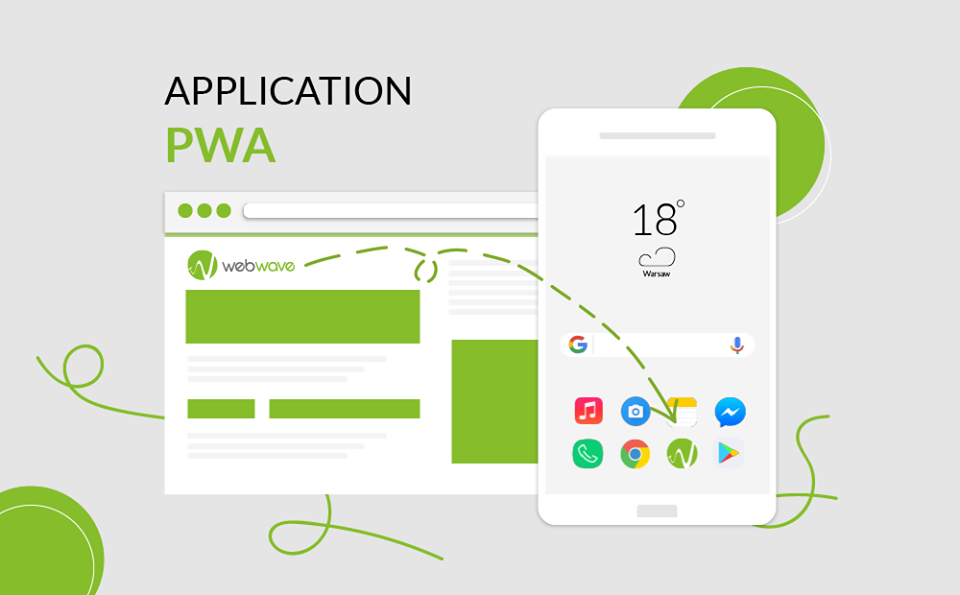PWA application - what is it and how to use it?
Updated: 22nd September 2022
Reading time: 6 min
Web applications are a part of the online word. Thanks to adjustments like websites builders and responsiveness, not only programmers are able to create sites that behave like applications.
In the past two years, a new generation of internet applications appeared - Progressive Web Apps (PWA).
What is PWA and why does it become so popular?
What's the difference between web application and mobile application?
Let's begin by explaining these two terms.
Mobile app is a product created for a specific operating system like iOS or Android. It needs to be written in a dedicated language - Swift/Objective-C or Java. It's often downloaded from distribution platforms like Apple Store or Google Play Store. Its biggest asset is access to other application on the phone.
Web app can be perceived as an extension of a responsive website. Technically, it is a web app, but the user who enters it gets an impression that it is a mobile application. It works offline, can be added to the desktop and has its own icon. What's more, people who create web apps can almost perfectly recreate native application interface.
WebWave AI Writer
Generate your website copy with just one click.
WebWave AI Writer
Generate your website copy with just one click
What is PWA?
Progressive Web App is a type of mobile app delivered through the net that uses the newest technologies to conform to the native application. It has to be placed on servers, available through URL addresses, indexable by internet searches and fulfill a few other conditions.
PWA checklist
-
has a secure connection HTTPS;
-
is responsive;
-
contains a Web App Manifest - a simple file with JSON extension that informs the browser about the app and how it should behave after being installed on a mobile device or PC;
-
needs to load quickly;
-
works on all browsers;
-
each subpage contains a separate, unique URL.
Disadvantages
Unfortunately, PWA apps have some limitations in regard to native apps, especially when it comes to mobile phones actions that can't be copied into the website. From iOS 11.3, users can run PWA on Apple devices, but it still lacks compatibility with older iPhones.
What's more, PWA is not capable of everything mobile app is. It is usually written in JavaScript, which makes less efficient and optimized than applications written in Kotlin or Swift.
Advantages
PWA biggest asset is its availability. It can be installed regardless of the operating system of the device. It is beneficial for both users and developers because creators don't have to build separate versions of the web app and users might be able to use it offline.
Google Chrom allows users to install web apps directly from websites.
PWA in WebWave
What do you think? Do you prefer standardized native applications or web apps?
Do you know that soon you will be able to implement PWA on your website created in WebWave?
Authors: Julia Madraszewska & Weronika Wawrzyniak
Other articles.
WebWave website builder is your AI-powered solution for building an online presence. Create your website in 3 minutes, add an online store or a blog, and grow your business.
We created this website with WebWave.
Follow us on social media
